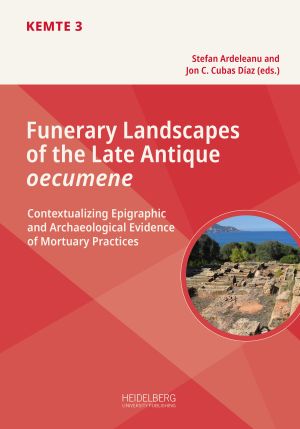Zitationsvorschlag
Lizenz (Kapitel)

Dieses Werk steht unter der Lizenz Creative Commons Namensnennung - Weitergabe unter gleichen Bedingungen 4.0 International.
Identifier (Buch)
Veröffentlicht
Christliche Bestattungskultur in Spätantike und Frühmittelalter am Beispiel von St. Maximin in Trier
Abstract Early Christian grave inscriptions are among the most important sources which provide us with an insight into life and death in Late Antique Trier. The number of inscriptions is high, consisting of about 1 300 individual items. In comparison: more than 42 000 Christian inscriptions of the Late Antique period are known from Rome, about 4 000 from Carthage. The numerical proportions show the importance of the Christian community at Trier. These epigraphic sources offer a reliable basis for an investigation into the social structure of the Christian community and church organisation, as well as into the development of church and society after the collapse of the Roman Empire.
Christian funerary culture can be illustrated impressively by the example of a 4th c. AD cemetery basilica discovered on the site of the later abbey of St Maximin. Size and equipment of the building suggest that the Christian community was protected by the imperial court residing in Trier. Nearly 1 000 sarcophagi, the high-quality of the inscriptions and the fact that the dead were dressed in precious robes indicate that the persons buried were members of the upper social classes.
Members of the high society were predominantly buried near the graves of saints. These tombs, enjoying the powerful protection of bishops venerated as saints, can be found on both the northern (St Maximin/St Paulin) and the southern cemetery (St Matthias).
After the fall of the Roman Empire, the holy tombs continued to retain their attraction. The example of St Maximin shows that burials in the funeral hall continued to be of the same social class. Funeral rites, however, changed, as noble and wealthy Franconian families provided their dead with precious jewellery instead of sumptuous clothing. Concerning Christian funerary culture, the transition from Late Antiquity to the Middle Ages did not result in a rupture but proceeded gradually.
Keywords Early Christian epitaphs, cemetery basilica, Late Antique textiles, inhumation ad sanctos, change of burial practices.






